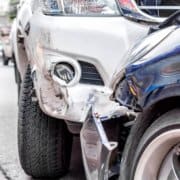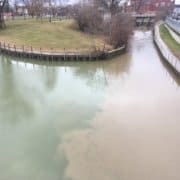Safety: loose cargo inside and outside of a motor vehicle
Motor vehicle crashes are the leading cause of workplace injuries according to the Bureau of Labor Statistics. Motor vehicle incidents contributed to 40% of all workplace fatalities. The majority of injuries occur during the initial impact of a crash; however loose cargo both inside or outside of the vehicle can cause additional injuries or property loss incidents.
Loose cargo in vehicles
Loose cargo within a vehicle such as empty bottles, trash, tools, etc. are not only a distraction while driving, but they also turn into projectiles during a crash.
Those half-filled water bottles, canned goods, boxes of products, a laptop computer could all become dangerous projectiles when hurling through the air during collisions.
At 90 km per hour (55 mph), a 20-pound (9 kg) object hits with 1,000 pounds (450 kg) of force — so powerful that a suitcase can shear off the arm of a crash test dummy. It is just as important to mitigate the secondary hazards, such as loose cargo, as it is to do so for the more obvious primary danger of the actual impact of a crash.
Mitigation actions
- Utilise the trunk or cargo boxes before putting items in the cab of the vehicle.
- Tie down or secure all items that pose a risk inside the cab.
- Perform periodic inspections of any vehicles on and off the work site for loose cargo.

 Thompsons Limited/Shutterstock
Thompsons Limited/Shutterstock